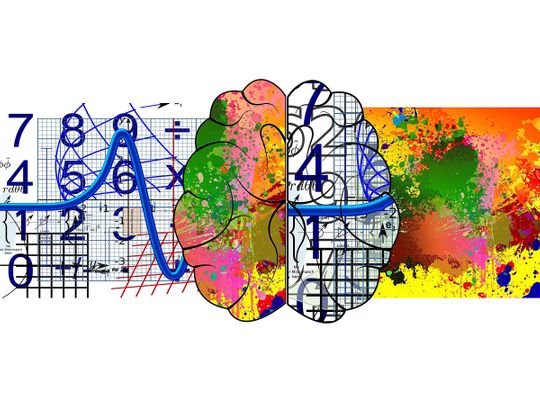
Have you ever heard the notion that if you’re right-brained, you tend to be more creative, and if you’re left-brained, you’re more analytical and logical? Well, neuroscientists say that’s just hokum – there’s no such thing.
Click start to play today’s Word Search, which is all about maths – something you normally would think you need to tap into your brain’s left side to solve.
The idea that personality or ways of thinking are fostered on one side of the brain or the other, was debunked by neuroscientists from the University of Utah in the US, in 2013. They scanned the brains of 1,011 people, from the ages of 7 to 29. Their process involved dividing each person’s brain into over 7,000 regions before they examined each one to look for connections and enhanced activity when people were given certain tasks to accomplish.
They found that it’s 100 per cent true that certain brain functions occur in one or the other side of the brain – for instance, language tends to be on the left, and attention or concentration is towards the right. But, the researchers made the distinction that people don’t tend to have a stronger left- or right-sided brain.
For instance, take maths – the theme of our Word Search today. According to a December 2013 report by US-based non-profit media organisation National Public Radio (NPR), research shows that our maths skills are developed from processing that occurs in both hemispheres of the brain, and that damage to either side could cause difficulties with maths. The left side of the brain deals with tasks that involve calculations and memory, like counting and reciting multiplication tables, while the right side works with estimations, such as evaluating the quantity of a set of objects.
So, it takes both sides of the brain to be logical. In the same way, it takes both sides to be creative, too. And nowhere is this better observed than in older adults.
According to a study conducted by neuroscientists at the University of Michigan, US, and published in the Journal of Cognitive Neuroscience, older adults activate both hemispheres of the brain to remember something that younger adults can remember using just one hemisphere. For instance, when young adults hold information in their short-term memory (like a friend’s new phone number), they activate areas of the brain involved in speech and short-term verbal storage. In the case of older adults, those areas are activated too, but they also show increased activity in the frontal cortex region, which young adults use only when performing complex short-term memory tasks.
For the aging brain, two hemispheres are better than one. Scientists think older adults have learned how to be both logical and creative, with different parts of their brain compensating for the natural decline that age brings to short-term memory and mental speed.
Whether young or old, creative or logical, our brain is using its entire breadth to seamlessly perform all its tasks.
Did you know about the left-brain/right-brain myth? Play today’s Word Search and let us know at games@gulfnews.com.



